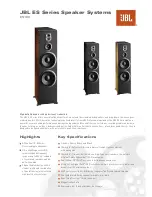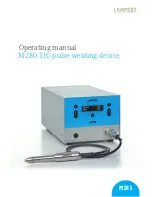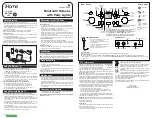
EASY-MAG-Series | Version 2.01
19
Operation
Influence of wire feed change on operating point and arc length.
The arc length is set via the ratio of welding voltage to
welding current.
9.7 Description and use of different arc types
The short arc (KLB)
is used for thin sheets, forced and root
welds in the low power range. The material transfer
takes place with little spatter formation in the short cir-
cuit.
The transitional arc (ÜLB)
is preferred for medium power in
MAG welding of medium plate thicknesses un argon mi-
xed gases. The material transfer is coarse droplet, partly
in short circuit - but with less spatter than in LLB (long
arc) under carbon dioxide.
The spray arc (SLB)
allows high melting rates and higher
welding speeds with larger wall thicknesses under argon
mixed gases.The material transfer is fine droplet without
short circuits and is very low spatter.
In long arc (LLB)
, high wall thicknesses are MAG-welded
under high-performance carbon dioxide. The material
transfer is coarse droplets and splashy. That is why this
type of arc is only used in a few cases.
Guide values for arc types and applications depending on wire
diameter
9.8 Selection of wire electrode and inert gas
With the MIG / MAG process, various materials such as
alloyed and unalloyed steels, stainless steels and alu-
minum welding. The welding system must be retrofitted
accordingly and equipped with the right components
such as filler material and gas.
Additional material
The filler material is selected based on the base material
to be welded and the desired weld seam quality. The
wire thickness is chosen according to the thickness of
the sheet, the shape of the joint and the required welding
current.
Protective Gas
The protective gas has the task to shield the molten bath
from the atmosphere. It influences the electrical conducti-
vity, the heat conduction and the heat content of the arc.
In addition, the shielding gas also influences the chemical
composition of the resulting weld metal due to ignition and
burnup processes. The shielding gas also determines the
welding process. Steel materials are usually an MAG
process (metal-active gas) that uses mixed gases that re-
act with the molten bath, ie are active. For welding alu-
minum, for example, pure argon is used. Argon is an inac-
tive gas and does not react with the molten bath. There-
fore, the welding of aluminum is a MIG (Metal Inert * Gas)
process.
Combinations of gas, base material and additional material
wire feed constant
Voltage constant
higher voltage
lower voltage
more wire
less wire
longer arc.
shorter arc.
shorter arc
(higher current)
longer arc
(lower current)
Application
Thin sheets in all positions.
Middle sheets in predica-
ments. Root welding on
sheet metal and tubes even
in constrained positions.
Medium sheet thickness
range in normal position.
Fillet welds also as fill seam.
Medium and thick sheets (fill
blankets and fillet werlds).
Wire
Voltage
Electricity
Electricity
Votlage
Electricity
Voltage
Short arc
Spray arc
Transition arc
Parental meterial
Additional
material
Gases
Structural
steel
S 235,
S 355 J
G2Si1,
G3Si1
82% Argon
18% CO2
Argon X5Cr-
Ni18-10
SG X2 Cr-
Ni19 9
97,5% Ar-
gon
2,5% CO2
or O2
Aluminum AlMg3,
AlMg5
AlMg3,
AlMg5
100% Argon
Summary of Contents for EASY-MAG 171
Page 30: ...www schweißkraft de ...












































